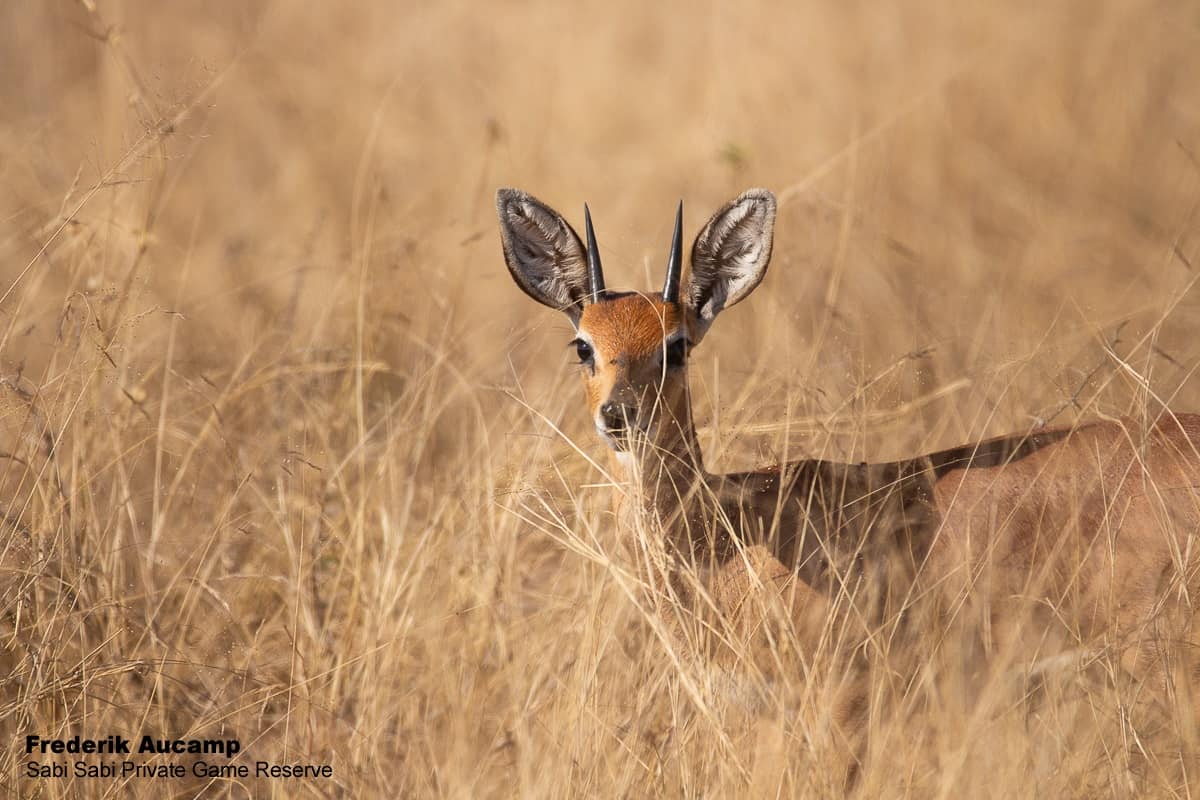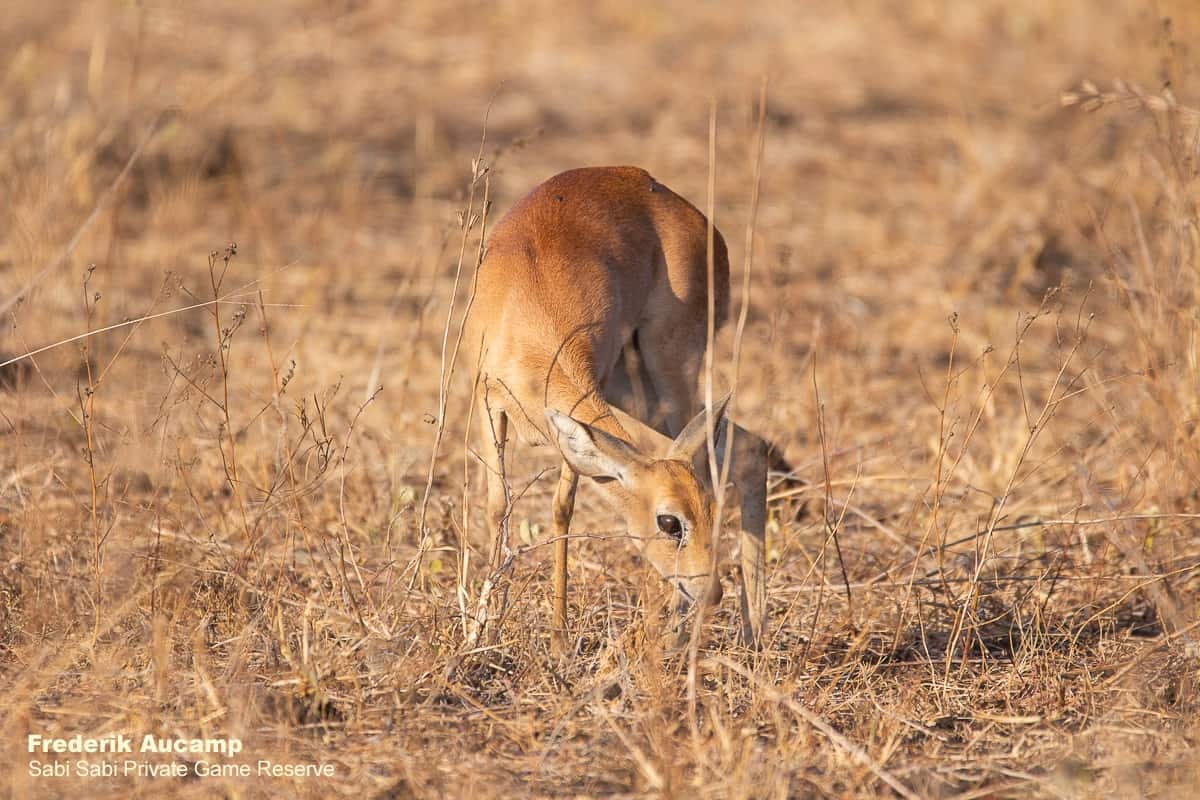Steenbok
on Sep 20, 2019Species name: Steenbok
Scientific Name: Raphicerus campestris
Weight: Male: 10-13 kg - Female: 10-13kg
Shoulder Height: Male: 50cm - Female: 50cm
General Habitat: Open savanna and grassland areas scattered with medium to small bushes and shrubs that provide enough shelter. They avoid dense thickets.
Diet: They are mixed feeders. They eat a variety of grasses, leaves, flowers, fruits, and underground roots and bulbs.

Steenbok are one of the smallest antelopes you will find in the Sabi Sabi area and it is also believed that they are the second most abundant antelope just after the impala in the Kruger National Park and surrounding areas.
Their name, “Steenbok” comes from the Afrikaans words, “Steen” meaning brick and, “Bok” meaning buck. The word “Steen” (brick) refers to the steenbok’s reddish-brown brick colour. The steenbok is mainly reddish-brown in colour over most of its body, but its breast and belly area are bright white in colour.
Their reddish-brown colouration gives them the perfect camouflage in their surroundings allowing them to blend in. When disturbed they will normally run away for a short distance and then suddenly stand completely still, looking back at what the disturbance was, if not chased. If a predator is spotted, they will stand or lie down perfectly still waiting for the predator to pass, hoping the predator does not notice it. If the predator comes too close for comfort, the steenbok will usually dash away with immense speed.
Steenbok are extremely fast and are known to outrun many of the predators in the bush.
Steenbok are very efficient animals in the fact that they are referred to as water independent antelope. They usually don’t need to drink water from surface water as they get enough water from the vegetation they eat. In summer, vegetation is lush green and packed with moisture making it easy for them to retain enough water to sustain their bodies, but in winter when vegetation dries out, they will normally dig out and eat underground bulbs and roots to get sufficient water for them to survive. If there are none of these resources, they will usually go and drink water from a surface water source like for example a waterhole or river.
One thing steenbok do that is quite fascinating is that they first scrape ground away with their front hooves, there after they defecate and urinate in that area and when they are finished they will scrape ground over the dung and urine with one of their front hooves, almost doing what your house cat might do in its litter box back home. Both rams and ewes are territorial and they might be covering their dung and urine for territorial marking, slowing down the rate at which evaporation takes place, causing the scent to last longer. The scraping of the hooves could also be that they are using their interdigital glands located in-between their hooves to leave behind their scent. This combined with their urine and dung is a very effective way of scent marking.
Steenbok are truly fascinating animals and if you want to learn more about these small yet efficient antelopes, come visit us on a Sabi Sabi safari.
My Memorable Sighting
About a year ago while out on morning safari we came across a female leopard busy marking her territory. While marking her territory she constantly looked around for any potential prey. While following her around we noticed a steenbok ram about sixty meters in front of the leopard. The steenbok noticed the leopard approaching him and suddenly froze and stood perfectly still until the leopard was about thirty meters from him, at this stage the leopard was too close for comfort and the steenbok ram took off with lightning speed. The leopard seemed surprised by the sudden movement and didn’t even know about the steenbok ram being within striking range. It was amazing to see how the steenbok ram managed to blend in with the dry grass and the rest of its environment and the fact that it stood perfectly still made it even more difficult for us to spot. Even an apex predator couldn’t spot this well camouflaged steenbok.
Photo Content
















